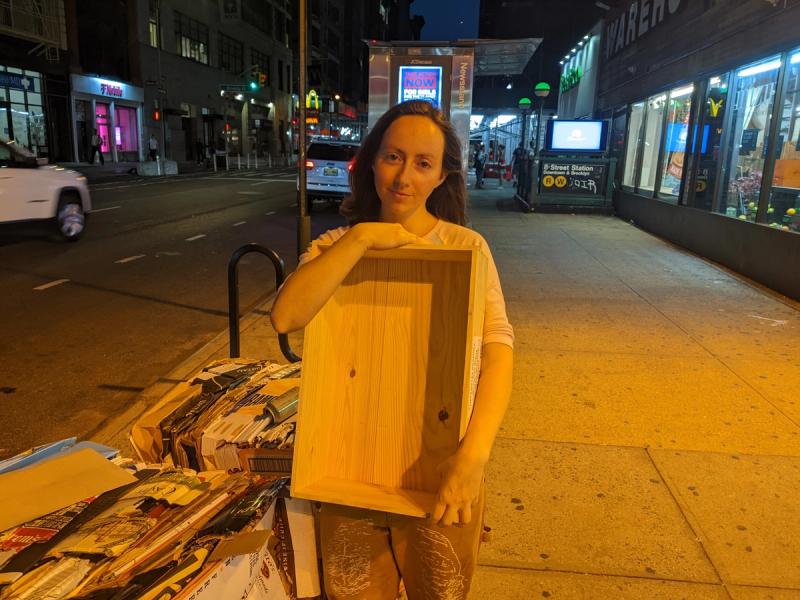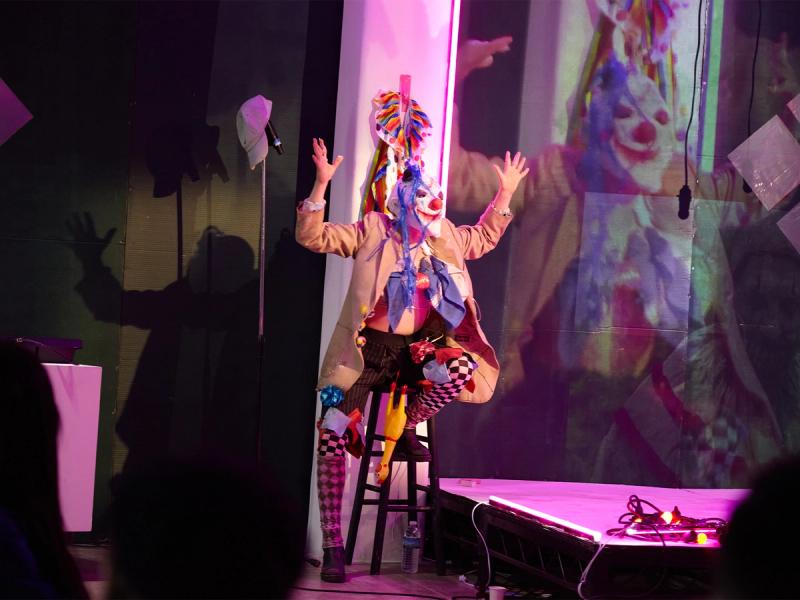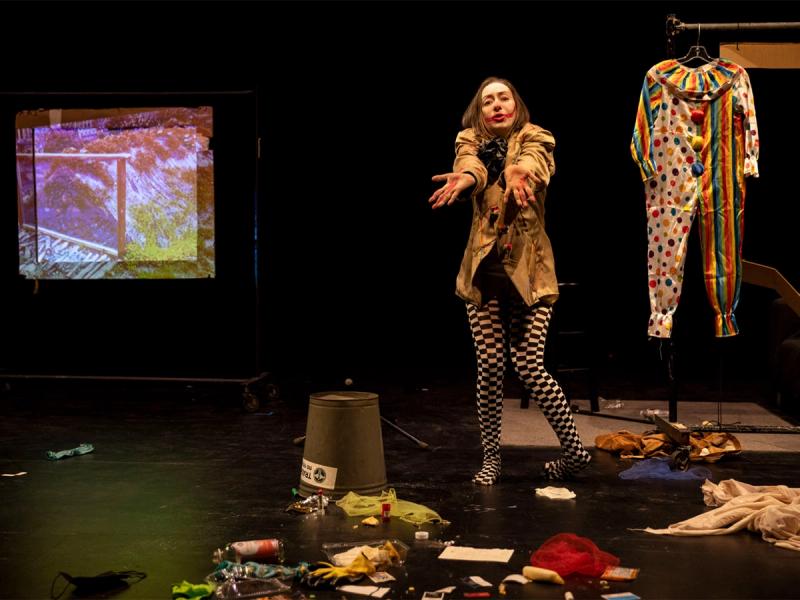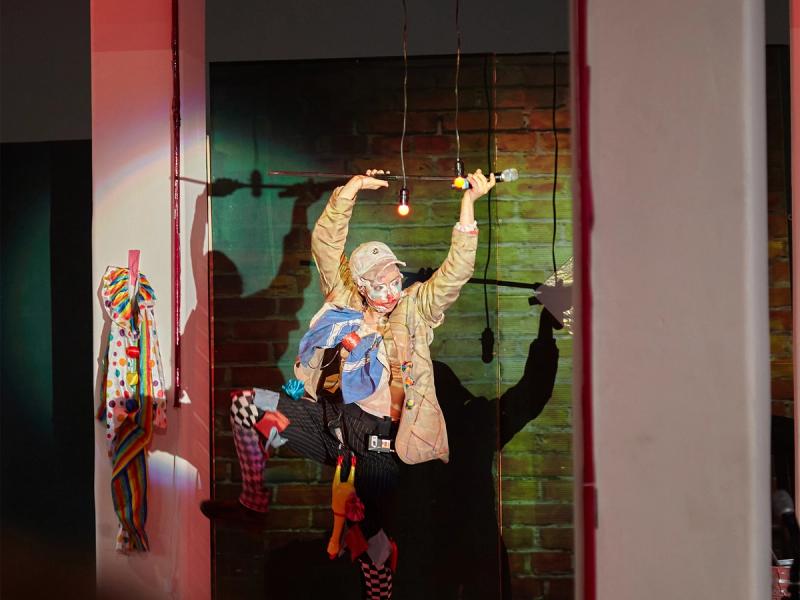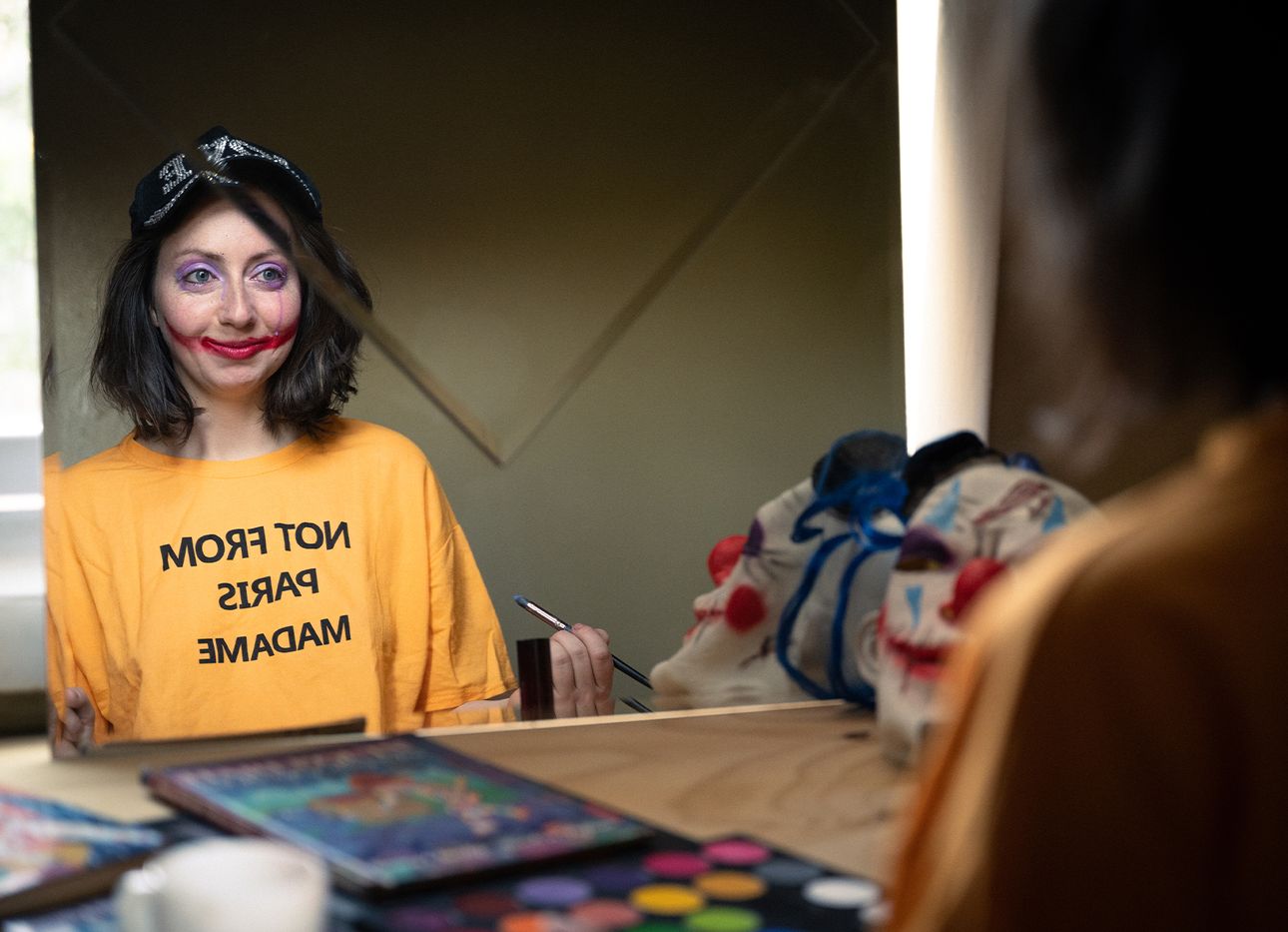
Alex Tatarsky on Art as a Means to Live Out the Absurd
It’s late August, and I’m walking on Grand Street in Lower Manhattan. It’s one of those summer evenings that’s cooler than expected, a pleasant foreshadowing of fall. I’m on my way to discuss compost with the artist Alex Tatarsky, and as I head east from the subway, I pass through the dense, networked scents of the edge of Chinatown: the briny tang of fish markets, the sweet snatch of a fresh egg waffle from a rolled ice cream shop, the yeasty cloud that floats around the famous bialy shop. Approaching Abrons Art Center, where Tatarsky is doing pick-up rehearsals for an out-of-town run of their show Dirt Trip, this close-packed olfactory landscape opens up into something with more space: a faint vegetal whiff from a small vacant lot, the not unpleasant chemical tang from a passing truck, and beyond these, the smell of a certain rot rolling in from the East River.
This final scent is fitting, given the intended topic of our conversation. Tatarsky and I have been friends for some time now, having crossed paths in the same circles of the performance world. Eventually our orbits synced up, and they invited me into their process for Dirt Trip as a dramaturg. This role can describe many different kinds of work, depending on context, but in my practice, I often describe a dramaturg as a thinking partner. I talk with the artist, look at what they’re making, and offer observations, connections, or provocations to help ensure the final work communicates what the artist intends.
Dirt Trip, which premiered in June at MoMA PS1, communicates Alex’s intent to question our society’s fear of lowness. In the world of the piece, “low” is a capacious category that includes compost, court jesters, renters, trash, and the classic red-nosed clown. As we set off on a walk toward Washington Square Park, dusk just beginning to fall, I ask them to describe their impression of the smell of downtown. They think for a moment, then answer, “The smell of exhaust, and, by extension, exhaustion.” This is followed by a laugh, before they launch into a succinct and erudite monologue that weaves together the fetid history of Canal Street, capitalist conceptions of waste, our society’s fear of decay, and the lengths humans will go to avoid being confronted with death. Sprinkled into this tightly woven text are several jokes, either self-deprecating or laced with a comically heightened sense of impending societal doom. The moment feels like a microcosm of Dirt Trip and, by extension, Alex’s practice as a whole, balancing sincere enthusiasm with a clownish sense of the absurdity of contemporary life.
As we cross the border of Chinatown into Little Italy, I mention the garbage bags piled on the sidewalk, waiting to be picked up, and Alex corrects me: “Not garbage! Wasted resources! Underutilized!” We pass stacks of egg cartons, folded cardboard tied with red twine, and a box of watermelon rinds, as Alex talks about the “magic” of compost. This experience of the streets of downtown, where they were living in a pandemic-era rental deal while making Dirt Trip, shaped their thinking about the piece. “When you start thinking from a compost perspective, none of this should be thrown out. It’s just so devastating to see so many resources being treated like waste. It’s frustrating not to see more creative solutions, where all this could be used to create rich soil for the neighborhood. It shouldn’t have to be shipped away because it’s stinky.”
Asked about the smell of compost, Alex lets out a sigh of pleasure that’s more often heard from someone who has just finished an exquisite dessert. “First of all, once you start, you can’t stop,” they say. “You get addicted to the smell.” When I ask them to describe the notes of compost’s odor, they immediately respond, “The forest floor, which is leaves, and fruits, and droppings, mixing together and being torn up by animals and turning into this layer of extremely nutritious dirt. And lots of people don’t realize you can have that smell in your home!”
This leads us to a discussion of urban composting methods (they’re a fan of a styrofoam cooler parked on the fire escape). As we walk and talk about the nitrogen-fixing benefits of pissing on your compost pile (“never enough piss,” Alex says), I notice we’re not far from their old loft on Canal Street, which they had to vacate because the landlord was desperate to take advantage of the rental market’s recent return to obscene heights. We round the corner and are soon gazing up at the fifth-floor windows from across the street. Alex and I had a few working sessions in that space, a floor-through loft with massive front windows. Each time I was there I could feel a faint glimmer of the fantasy of 1970s New York, when artists could afford to live in these kinds of spaces, ones that allowed them the necessary dimensions to think, make, and move in large ways, and with a large imagination.
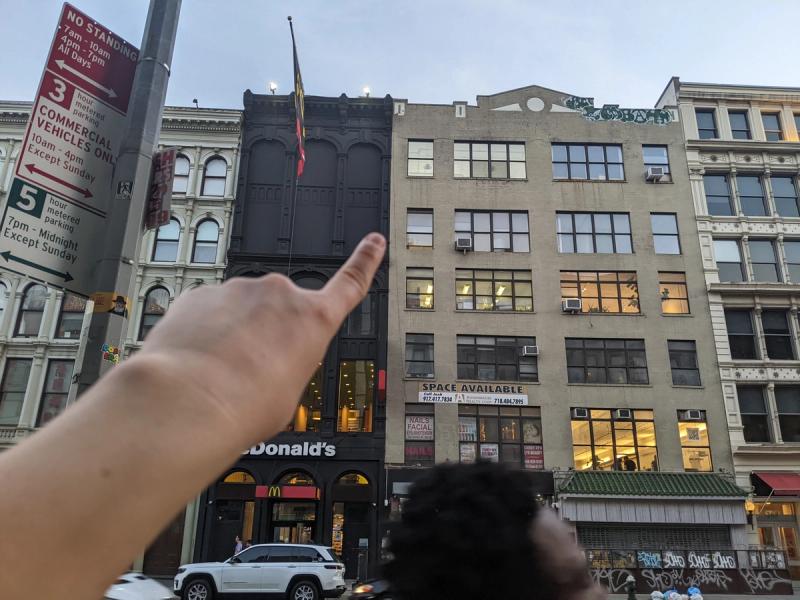
That kind of space is nearly impossible to come by now, and as we walk on, cutting up Mercer Street through Soho, the neighborhood seems haunted by the ghosts of artists and lofts past. The halo of their art-making wildness is now used, in a roundabout way, to market wildly expensive residences suffused with the bland conformity of contemporary “tastefulness” all too common now in cities around the world. Alex mentions the monoculture of Soho, and I ask, “How does all this end?” gesturing broadly at everything.
Alex falls silent for a moment, and we walk between a camera and the influencer it belongs to trying to capture a fashionable selfie with the setting sun sinking over the cobblestone street. “The only optimistic read is that this too shall rot,” they say finally, and then let loose another of their signature laughs, which seem to oscillate rapidly between joy and despair, so rapidly that, perhaps, for just a second, it’s clear how closely those emotions can be linked.
It is this quality that I find particularly compelling about Alex’s work. Moving rapidly from subject to subject, from one emotional register to another, they reveal the flimsiness of the categories we humans use to keep things apart and maintain a sense of order. A clown can be so many things: not just comic or creepy, but also the most serious person in the world. That clown making a fart noise with their mouth can in fact be articulating a deep critique of an imbalanced ideological system that prizes profit over people. And people, gathering together to watch that clown sing, dance, and engage in manic displays of vulnerability and optimism can see, even briefly, a world in which the desire for profit is once again in balance with the needs of the society that generates it.
Alex connects this imbalance to ego, to individuals clinging to an idea of “I” and prioritizing that over other possibilities for organizing society. I ask them what can be done to destabilize that attachment to the self, to aid in the decomposition of this ego-fixation that drives so much of our inability as a species to even begin to address the massive societal challenges the next century holds. “Maybe this is cheesy,” they say, “but I am always genuinely surprised what can happen between a performer and an audience. That’s where I experience the greatest intimacy. I’m never finished making a piece; I need the audience to finish making it with me. That’s the key to being a clown: The clown really can’t make the thing without the audience.”
Working in a form that requires other people in order for it to become complete strikes me as a strategy to address the seemingly immoveable “I” that often stands in the way of collective action. Catalyzing a community experience with their work, Alex eschews object-based forms that might have more tangible market value to insist on the transformative absurdity of a single person offering a different view of ourselves and our relationships to each other, to the land we live on, and to the vast resources we sometimes mistakenly call trash.
Is this desire to disrupt our society’s obsession with status, power, and money absurd? Perhaps. And yet, as Alex says near the end of our conversation, “Art is a place where you can live out your most absurd desires and fantasies.”
Just before we leave each other for the evening, Alex spots a wine crate atop a pile of neatly bound liquor boxes that have been set out on the curb for pickup. “Yes!” they say, picking it up. “These things are so good, I don’t know why anybody throws them out.”
